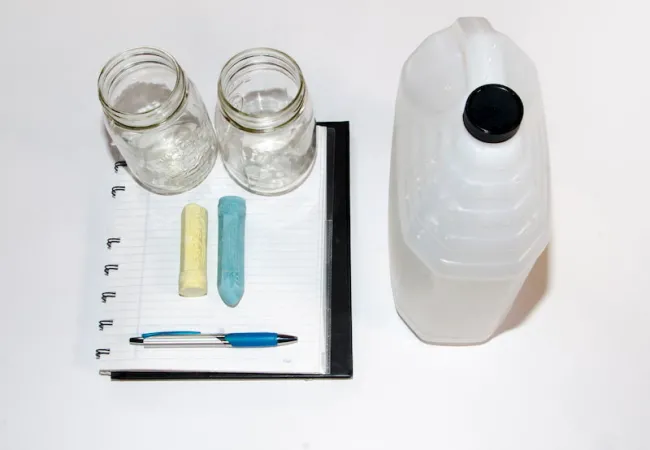
If you’ve ever seen a rusty building, a statue that looks like it’s rotting, or the green copper roof of the Parliament buildings in Ottawa, you’ve seen chemical weathering in action. In this experiment, discover the effect of size on weathering reactions.
What you need
- Vinegar
- Sidewalk chalk (make sure it says calcium carbonate on the label)
- Two glass cups or jars
- Pencil and paper
Make it
- Take two pieces of equal-sized chalk and place one inside one of the jars.
- Break the other piece up into many smaller pieces, and place the pieces inside the other jar.
- Fill the jars with approximately the same amount of vinegar. It should be enough to completely cover all of the chalk, but with some room left at the top.
Test it
Watch the two jars for about two minutes and record your observations. What do you notice is different between them? Why do you think that it happened?
Explain it
Sidewalk chalk contains a compound called calcium carbonate (CaCO3), which reacts with vinegar (acetic acid, CH3COOH) to form the gas carbon dioxide (CO2). Some of the mass of the chalk is lost to form this gas, making it smaller.
You will have noticed that the reaction with the broken-up chalk happens much quicker than the solid piece of chalk, as seen by how quickly the bubbles are produced. This is because the reaction needs to have vinegar and chalk molecules colliding together to complete. When the chalk is broken up, more surface area is created on the small pieces for the reaction to occur.
Observe it
Although it is a slower process in nature, this same reaction happens to limestone — acidic rain reacts with it, producing carbon dioxide. This process is called chemical weathering. As shown in this experiment, when the limestone is in smaller pieces, it will be weathered away more quickly, even with the same mass. Take a look at some statues in your town or city; can you tell which ones are older?
Go further
In nature, usually when something needs their surface to perform something (like a reaction) often, the structure is small. This is because smaller objects have more surface area in comparison to their volume.
This can be shown mathematically. Imagine you have three cubes: one with the dimensions 1x1x1, one that’s 2x2x2 and one that’s 3x3x3. First, calculate the volume (length3), and then calculate the surface area (length2 x 6) for each cube. Then, take a look at how fast both the surface area and the volume are growing from one cube to the next. You’ll notice that volume grows more quickly than surface area, so the ratio between them gets smaller.
This phenomenon allows things like cells to be as efficient as they are; their small size allows them to transport more food over their surface, while not wasting energy on a big interior!
Program Details
- View all programs at the Canada Science and Technology Museum
- View other programs related to Sciences


